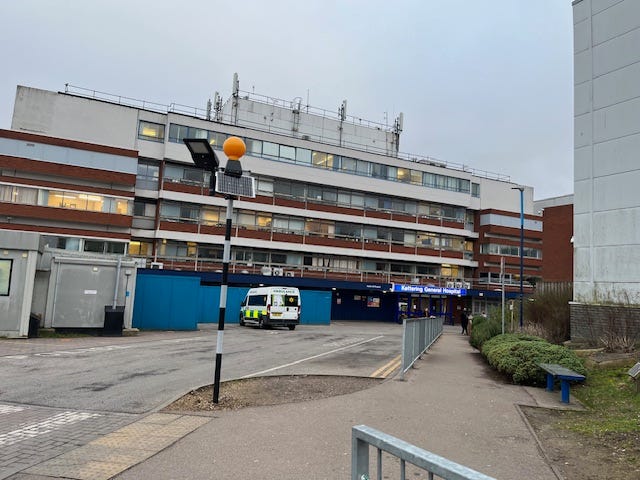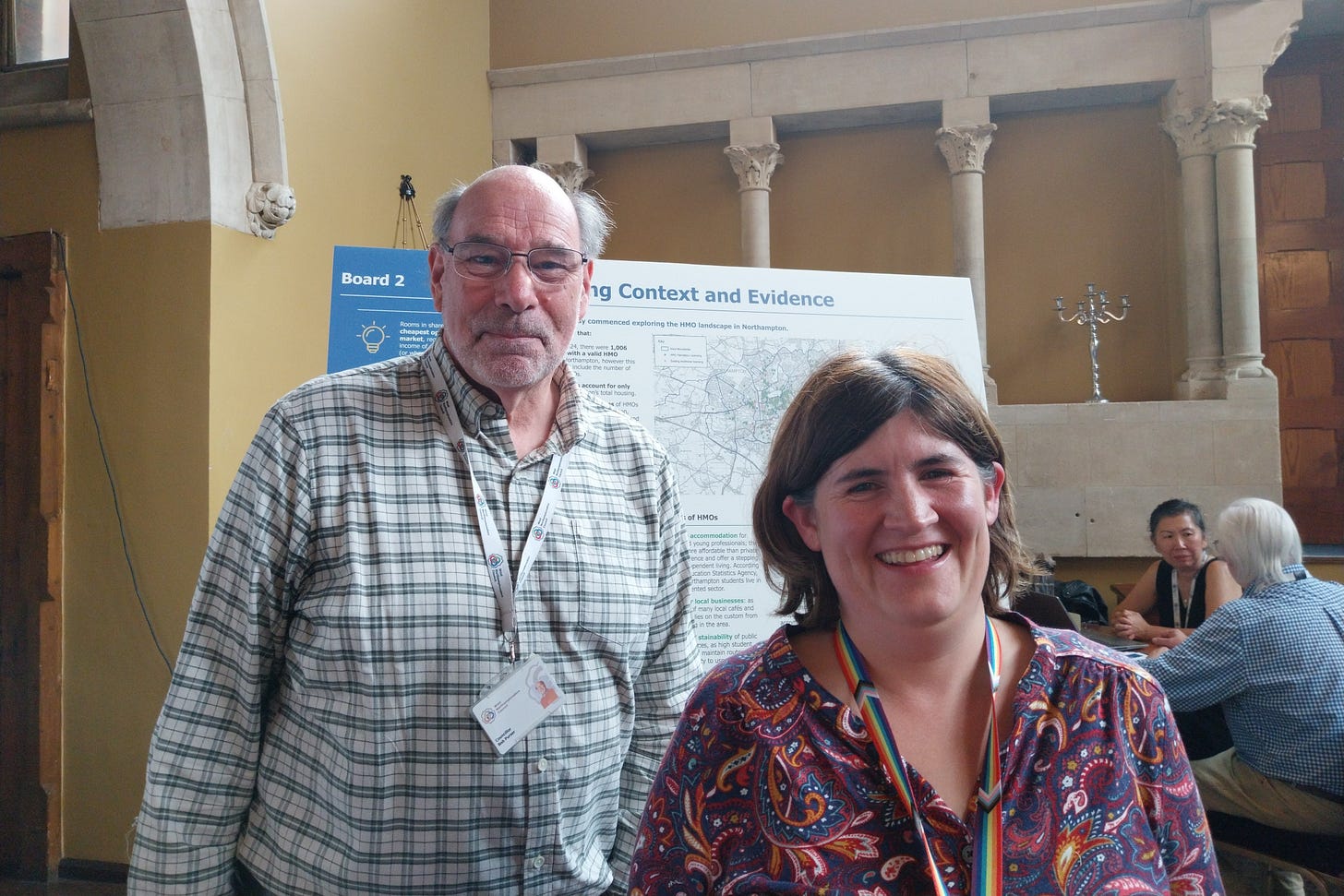Friday brief: Major job cuts will send ‘shockwaves’ through Northants hospitals, claims union
Health, politics and a link to a fascinating article about the Jesus Army, feature in this week's Friday round up
Hundreds more jobs could be cut this year across the Northamptonshire hospitals in an effort to make savings.
The University Hospitals of Northamptonshire (UHN) Group, which encompasses Northampton and Kettering General Hospitals (NGH and KGH), has said it is looking to cut almost 800 jobs across its workforce.
This comes after the hospitals opened up a Mutually Agreed Resignation Scheme (MARS), which began in May this year.
UHN’s chief people officer, Paula Kirkpatrick, said the voluntary resignation programme had been “successful in helping us to reduce our overall workforce costs in a controlled and compassionate way across both of our hospitals”.
Papers going to a UHN board of directors meeting today have confirmed that the MARS programme has now ended. It was agreed that 80 members of staff would be leaving the organisation between July and September.
Laura Churchward, chief executive of the University Hospitals, previously said that colleagues who directly provide care for patients were not in scope of the scheme.
Chief People Officer Ms Kirkpatrick continued:
“Our aim for this year is to reduce our salary costs by reducing our total workforce by the equivalent of 781 posts and so we will be continuing to look at how best to do that.
“We are doing all we can to avoid needing to make redundancies this year by reducing the use of expensive agency workers, reducing the number of new starters joining us, and reducing our use of bank workers, and this work continues.”
The current workforce amounts to 11,000 staff across Kettering and Northampton general hospitals combined.
The UHN said it had reduced its workforce by the equivalent of 329 posts in total since the end of 2024/25.
The head of health for UNISON East Midlands, Gareth Eales, said:
“Losing hundreds of NHS jobs is a massive blow and will send shockwaves through hospitals already under huge strain. Patients deserve safe, fully staffed services, not more pressure piled on already overstretched teams.
“We understand the financial pressures facing Trusts, but cutting jobs is not the answer. What’s needed now is a serious conversation about long-term investment in our NHS, so staff can do their jobs properly and patients get the care they need.”
According to the UHN Board papers, salaries and wages of staff, including agency work, make up around 60 per cent of the hospitals’ annual payments in 2025/26.
Overall workforce numbers, and the proportion of bank and agency staff, have all reduced in the first Quarter of 2025/26, leaving the UHN ahead of its workforce reduction plan. Both hospitals are in a significant financial deficit.
By Nadia Lincoln, local democracy reporter
News in brief
Two people have lost their lives in two separate accidents on the county’s road this week.
A motorcyclist died at the scene of a crash on the A6 between Desborough and Markket Harborough on Wednesday. His bike had been involved in a collision with a black Nissan and a Renault horsebox.
The day before, a women in her 40s who was a passenger in a Mercedes limousine died after an accident in Pytchley at the junction of the Wellingborough Road and Broughton Road. The Mercedes was involved in a collision with a Black Citroen. A nine year old girl travelling in the Mercedes was taken to Birmingham Children’s Hospital with serious injuries.

New figures have revealed that a quarter of babies born at Kettering and Northampton general hospitals were delivered by emergency caesarean last month.
Hospital board papers show that 563 babies were born across the two hospitals, with 331 born in Northampton and 232 born in Kettering. At NGH 20 per cent of births were induced and 22 percent of births ended in an emergency section. Inductions are when the birth process is started artificially and emergency sections occur when there is a potential threat to the safety of the mother or child. The report does not say whether there was any correlation between the inductions and the emergency operations.
At Kettering 27 per cent of the 232 babies born were delivered via emergency section. 34 per cent of the births were induced.
Maternity services at both hospitals are rated as requiring improvement by the Care Quality Commission. The board will receive a report this morning about Kettering General which last July was put into the NHSE maternity safety support programme and allocated maternity improvement advisors.
The diagnostic phase has now concluded and found that improvements are required to the estate and maternity environment and there was a lack of stable leadership. It has been recommended that a perinatal vision and strategy across the trust is developed.
Northampton residents have raised concerns about the density of Houses in Multiple Occupation (HMOs) in the town and its effect on neighbours, as the council has invited members of the public to have their say on its new Local Plan.
As of June 2024, West Northamptonshire Council (WNC) reported that there were 1,006 licensed HMOs in Northampton, with almost three-quarters located in central Northampton, in the Castle, Abington and Phippsville, Delapre and Rushmere, and St. George wards.
According to WNC, there are also currently around 400 additional properties under investigation as suspected HMOs.
The council held a drop-in event at the Guildhall on Monday, July 28, where local residents were encouraged to attend to learn more about the HMO policy and share feedback with the consultation team.
Speaking to the Local Democracy Reporting Service (LDRS) at the event, Richard Shanahan, who lives next door to a HMO, said:
“I don’t think it’s right that homeowners in these residential areas should have to put up with HMOs.
“They’re devaluing properties and the noise and the parking is a joke.”
The authority can manage the number of HMOs in the area through planning and licensing, which determines if a HMO can be converted in the first place and then monitors its condition and safety going forward.
WNC’s new Local Plan will guide development across the area until 2043 and will provide clear policies on when the creation or conversion of such a property would be acceptable.
Current planning rules include a 10 per cent concentration threshold, which means an application will not be supported if one in ten properties within a 50m radius are already HMOs. Other assessments on how conversions will affect existing neighbours and their amenities are also taken into consideration
Cllr Zoe Smith, who is a ward member for Abington and Phippsville, which is one of the areas most affected by HMOs, warned of the huge impact they had on families.
She said:
“The sheer density of HMOs in Abington Phippsville means that house prices have come out of the affordability for a lot of ordinary families.
“We would argue that it also has a significant impact on parking, which doesn’t just affect drivers, it’s people trying to cross roads safely, people with mobility issues, wheelchair users, and parents with buggies.
“Just in our area, it’s a constant stream of applications and I feel that not a month goes by that we don’t have a new HMO application in our inbox.
“What we’d like to see is a much bigger voice for residents where they are listened to.”
She advocated for strengthening the Local Plan to allow the Council’s planning committee to feel more confident in turning some schemes down and to be backed up by policy.
WNC has commissioned an independent assessment to better understand its current stock of HMOs and forecast the future need in the region up to 2043.
Cllr Charlie Hastie, WNC cabinet member for housing, said:
“My view is that well-run HMOs can provide a very useful part of the housing sector, if we are rooting out the bad and encouraging the good.
“Unlicensed and illegal HMOs have no place in WNC or society in general. I really would encourage people to read the local plan proposals and share their views.”
Members of the public who were not able to attend the event can view the proposals and have their say on West Northamptonshire Council’s website here.
By Nadia Lincoln
A BBC documentary has aired this week about the abuse carried out within the controversial Northampton based cult the Jesus Army. In the documentary a number of people spoke out about the abuse that occurred within the religious cult created by Noel Stanton in Bugbrooke.
Journalist Hilary Scott lived next door to a Jesus army property in Northampton. Read her account published in the Nene Quirer here.
Can you support our local news?
Each year the local news environment becomes more under threat and we are now competing with unfiltered social media where facts are sparse. Everything NN Journal sends to you is fact checked and there is no AI involved. Every public report we write about is read and every word written in our articles id done so by a human with journalism training. For £6 a month you can help ensure we remain.





Using the word ‘accident’ suggests that no one’s to blame.
One of the Road Collision Reporting Guidelines stresses that journalists should not use the word “accident” for a road collision but, instead, use “crash.” This is the language long used by the police, with the acronym RTA for “road traffic accident” superseded by “road traffic collision,” or RTC. The word “accident” suggests no-one is to blame for a crash.
https://www.rc-rg.com/guidelines
They are CRASHES not ACCIDENTS until proven otherwise. RoadPeace.org have campaigned tirelessly to get this adjusted in all documentation. Please do the same.